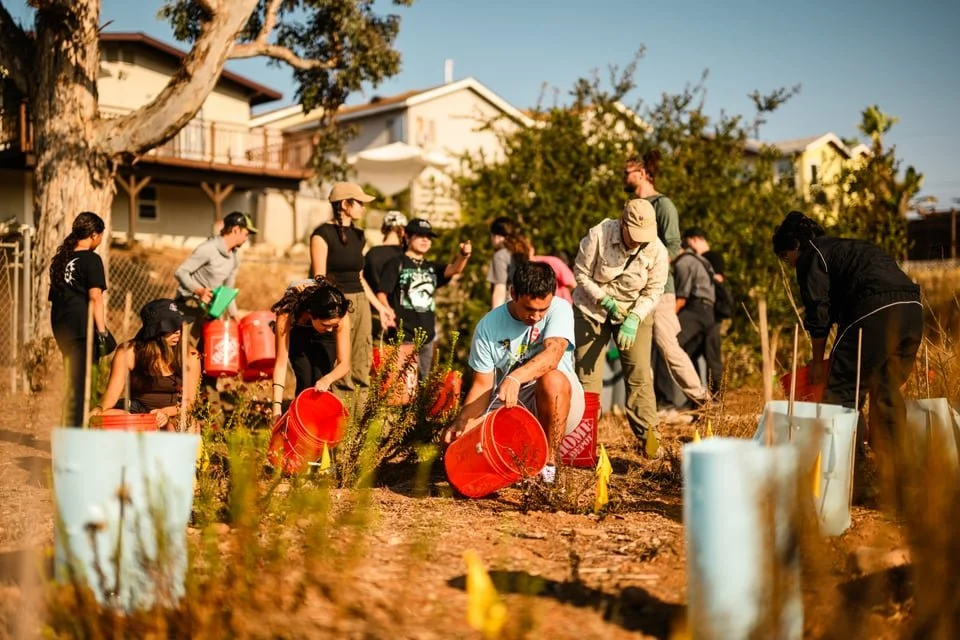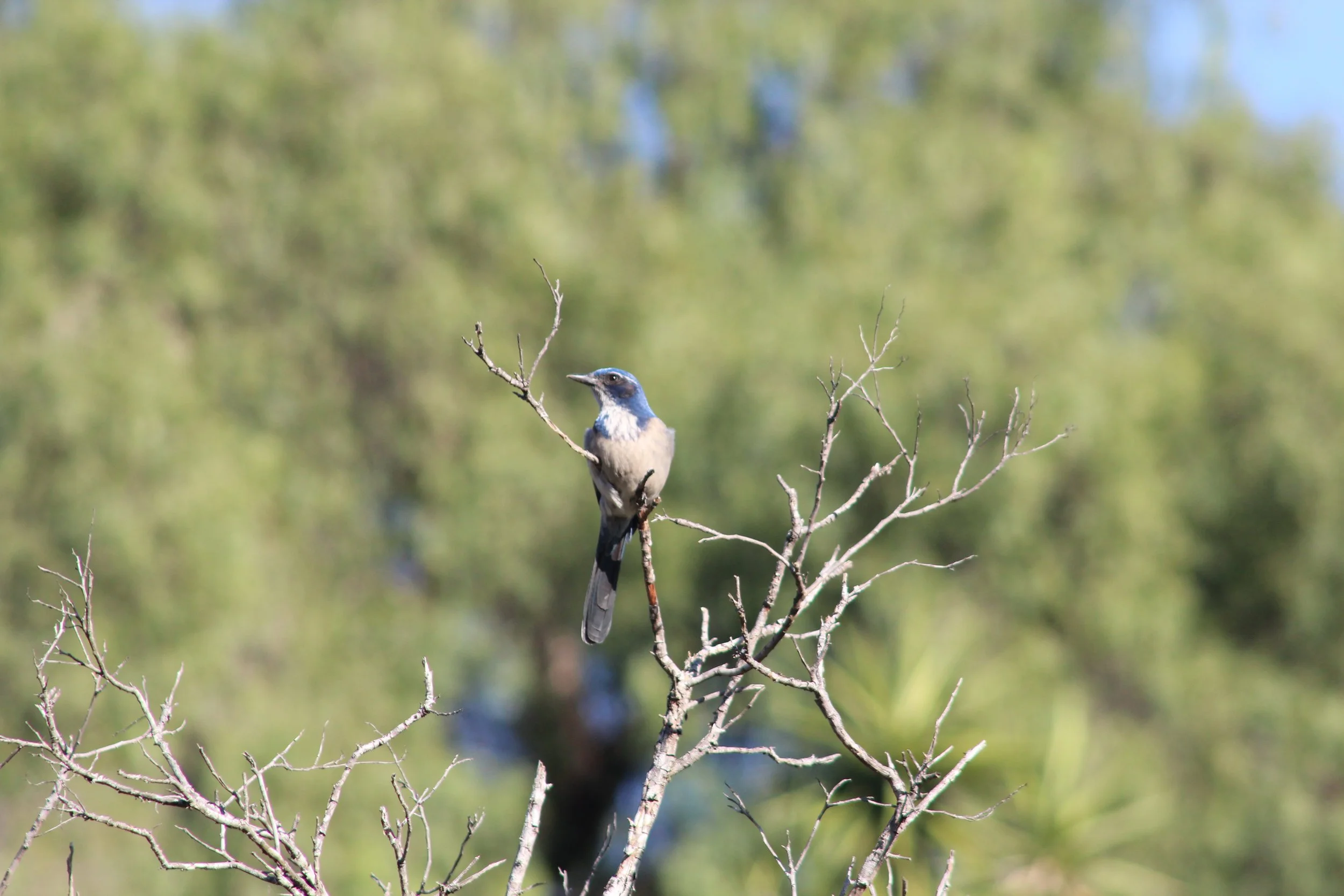Promote. Protect. Restore.
Canyonlands uplifts communities by connecting people with nature through ecosystem restoration, workforce development, environmental education and advocacy, and by harnessing the mutually beneficial power of conservation to safeguard biodiversity and improve quality of life.
We respect and acknowledge that our work takes place on the unceded ancestral lands of the Kumeyaay Nation. Through stewardship and collaboration, we aim to compliment their extensive knowledge and land management practices.

H e a l i n g i n N a t u r e
San Diego Canyonlands was recently awarded $50,000 as part of the Prebys Healing Through Arts and Nature Initiative. This initiative seeks to improve community health and well-being by enhancing access to arts, culture, and nature.
I believe that the environment inspires the artwork and the artwork reflects society. In my work, the vibrant colors and beauty intrigue people, and once they look closer, they learn about a specific species or plant. I spend so much time and attention on the subjects and that translates to the viewer. The artwork is my way of persuading others to connect with species native to San Diego.
¡Hola! My name is Maria de Lourdes Muñoz but I have always gone by Lourdes, or Lulu for short. Growing up Latina, I was surrounded by my Mexican heritage, taking in all the vibrant colors and artisan crafts that came with it. I am very proud of my culture and find it often influences me as a graphic designer, incorporating bright colors and a playfulness to my work. With a passion for wildlife conservation, using my design and photography skills to bring awareness and be part of the catalyst for change.
“Canyonlands not only helps to restore the ecological damage caused by humans but also provides low-income students with an opportunity to explore a scientific field while earning a paycheck” (Frank, CCI Senior, Hoover High).
California gnatcatchers are such a beautifully emblematic mascot for San Diego and such an integral part of its ecosystem that they should easily capture the heart of anyone who lives here and is lucky enough to encounter one. It’s why the bird is front and center on our logo here at Canyonlands and why I hope you’ll also adopt them into your environmental ethos. After all, this is their home too.
One of the first tell-tale signs that you may be near a bird nest or nesting grounds is witnessing a mating display, which can be difficult to spot or hard to miss depending on the bird. For instance, a potential pair of red-tailed hawks will circle each other way up in the sky, making their iconic hawk screech (which you may recognize whenever there’s a bald eagle on TV), before the male does a series of showy dives, flight maneuvers, or even handing off prey to the female mid-flight, finally letting down his legs and touching her briefly from above. It’s less likely you’ll see smaller birds doing their displays, but it’s always a possibility!
It’s breeding season and with that comes birds searching for a place to nest and raise their hatchlings. If they’re a bird of prey or raptor, it will have to be a spot high up, close to the heavens, that they will call home for at least a month. The go-to tree would most likely be the eucalyptus tree, as they are abundant and are some of the tallest trees reaching up to 300 feet in height, and that can be found in canyons and open spaces. However, Eucalyptus trees are an invasive tree species, so where else could these San Diego raptors call home?
In celebration of Women's History Month a special highlight on the first female ecologist in California whose research in vernal pools still influences us today.
(photo from Californiachapparal.org)
Dig a bit deeper into local ecology, and you’ll start to understand just what’s going on and why, over the course of a single day, upwards of three hundred palms needed to be airlifted out.
In celebration of Women's History Month a special highlight on the first female ecologist in California whose research in vernal pools still influences us today.
San Diego's canyons and communities need your support
We have earned a Candid Platinum Seal of Transparency! This means we are working hard to make the most impact out of your support so that you can feel confident about your donation to Canyonlands.






















